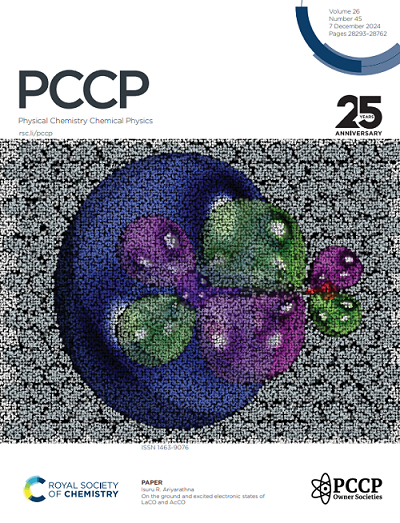辐照多层膜中剂量率效应和反应物质形成的研究-第1部分EVA/EVOH/EVA
IF 2.9
3区 化学
Q3 CHEMISTRY, PHYSICAL
引用次数: 0
摘要
本研究探讨伽玛射线、x射线和电子束对生物技术中常用的醋酸乙烯基(EVA)多层膜的影响。电子自旋共振(ESR)分析表明,辐照产生不稳定的羟基烷基自由基,暴露后一天可量化,浓度在9天内下降,并且在所有三种辐照技术中观察到相似的动力学。研究的重点是剂量率的影响,剂量率对聚合物的性能有显著影响。辐照过程中产生的过氧化氢和羟基自由基等活性物质可通过蛋氨酸氧化影响蛋白质功能。先进的分析技术表明,剂量率显著影响了反应物质的水平,影响了膜的结构完整性和化学稳定性。伽马辐射产生更多的氧化物质。该研究得出结论,剂量率对蛋氨酸亚砜的产生至关重要,暴露时间越长,浓度就越高,尤其是在伽马辐射中。这些发现强调了考虑剂量率和辐照技术来优化多层膜的稳定性和性能的重要性。本文章由计算机程序翻译,如有差异,请以英文原文为准。

Investigating dose rate effects and reactive species formation in irradiated multilayer films – part 1 EVA/EVOH/EVA
This study investigates the effects of gamma rays, X-rays, and electron beams on ethylene vinyl acetate (EVA) multilayer films, commonly used in biotechnological applications. Electron spin resonance (ESR) analysis showed that irradiation generates unstable hydroxyalkyl radicals, quantifiable one day post-exposure, with concentrations decreasing within nine days, and with similar kinetics observed across all three irradiation technologies. The research focuses on dose rate impacts, which significantly influence polymer properties. Reactive species like hydrogen peroxide and hydroxyl radicals, generated during irradiation, can affect protein function through methionine oxidation. Advanced analytical techniques reveal that the dose rate significantly impacted the levels of reactive species, impacting the film's structural integrity and chemical stability comparably. Gamma irradiation generates more oxidative species. The study concludes that dose rate is crucial in methionine sulfoxide generation, with longer exposure leading to increased concentrations, particularly in gamma irradiation. These findings underscore the importance of considering dose rate and irradiation technology to optimize the stability and performance of multilayer films.
求助全文
通过发布文献求助,成功后即可免费获取论文全文。
去求助
来源期刊

Physical Chemistry Chemical Physics
化学-物理:原子、分子和化学物理
CiteScore
5.50
自引率
9.10%
发文量
2675
审稿时长
2.0 months
期刊介绍:
Physical Chemistry Chemical Physics (PCCP) is an international journal co-owned by 19 physical chemistry and physics societies from around the world. This journal publishes original, cutting-edge research in physical chemistry, chemical physics and biophysical chemistry. To be suitable for publication in PCCP, articles must include significant innovation and/or insight into physical chemistry; this is the most important criterion that reviewers and Editors will judge against when evaluating submissions.
The journal has a broad scope and welcomes contributions spanning experiment, theory, computation and data science. Topical coverage includes spectroscopy, dynamics, kinetics, statistical mechanics, thermodynamics, electrochemistry, catalysis, surface science, quantum mechanics, quantum computing and machine learning. Interdisciplinary research areas such as polymers and soft matter, materials, nanoscience, energy, surfaces/interfaces, and biophysical chemistry are welcomed if they demonstrate significant innovation and/or insight into physical chemistry. Joined experimental/theoretical studies are particularly appreciated when complementary and based on up-to-date approaches.
 求助内容:
求助内容: 应助结果提醒方式:
应助结果提醒方式:


